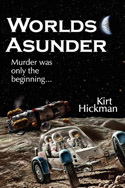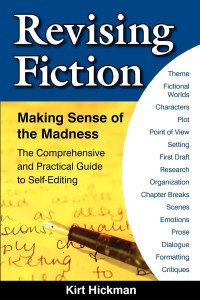by Kirt Hickman
You’ve heard it before: Never tell something you can show. This is a difficult concept for many new writers, but it’s crucial. It lurks beneath a multitude of self editing sins: problems ranging from passive voice to information dumps and narrative summary, to absence of tension, and others. Telling the story, rather than showing it, gives it the detached feel of a news article. It keeps the reader from experiencing it as though she is the viewpoint character. It leeches the importance—the very life—out of the events.
What is Tell?
How do you know if you’re showing or telling? My rule of thumb is simple.
You may state facts:
Consider these examples from a critique submission.2 The scene is written from the viewpoint of a teenage boy.
Here’s an example in which the same author did a delightful job of showing:
How to Show
Rewrite any sections in which you’ve told something. To find a way to show it, ask yourself this question: What can the viewpoint character see, hear, feel, smell, taste, or recall, that allows him to draw the conclusions that you’ve told instead of shown? In other words: How does he know this? If you’ve drawn a conclusion for the reader, the viewpoint character must also have drawn this conclusion. On what is his conclusion based?
If the viewpoint character has nothing upon which to base the conclusion, no way to know the thing you’ve told, then the section of tell constitutes a viewpoint violation. Delete it or find some other place in your manuscript to reveal the information. Keep in mind, though, that if you move it, it’s still tell. You must still convert it to show.
Be particularly attentive to dialog tags that tell emotion, as in this example:
Below, I offer three ways to correct the passage above. I show Chase’s surprise through his actions, thoughts, and dialog, respectively.
1Noah Lukeman. The First Five Pages. Simon & Schuster. 2000.
2Excerpts from critique submissions are reprinted with the permission of the original author.
 Kirt Hickman is a technical writer turned fiction author. His books include three sci-fi thriller novels Worlds Asunder (2008), Venus Rain (2010) and Mercury Sun (2014), the high fantasy novel Fabler’s Legend (2011), and the writers’ how-to Revising Fiction: Making Sense of the Madness (2009).
Kirt Hickman is a technical writer turned fiction author. His books include three sci-fi thriller novels Worlds Asunder (2008), Venus Rain (2010) and Mercury Sun (2014), the high fantasy novel Fabler’s Legend (2011), and the writers’ how-to Revising Fiction: Making Sense of the Madness (2009).
This article was originally published in the May 2008 issue of SouthWest Sage, and is reprinted here by permission of the author.



























Leave a Reply